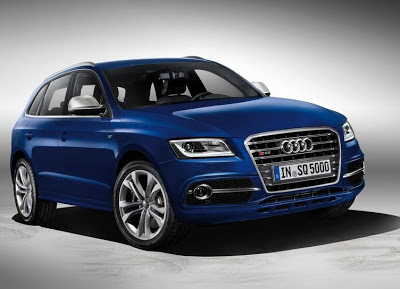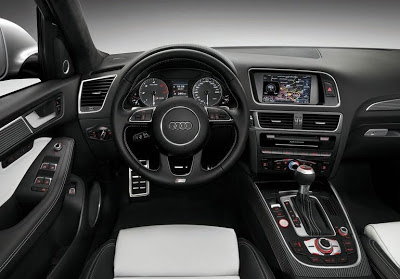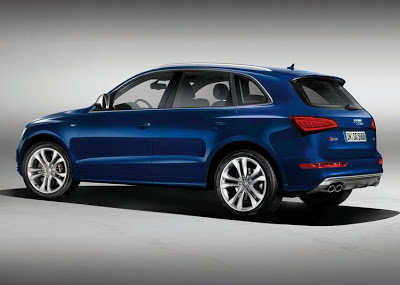Audi announces prices Q5 2013 model, which will arrive at dealerships in late summer. Few external changes but significant improvements mechanically, since some versions increase their power, others decrease their consumption and, in the most successful developments, achieve both goals.
This is precisely the reason that we have dared to qualify SQ5 Audi TDI multipurpose car. In adverse weather conditions the AWD can safely move on any surface while others skate on its front wheels while trying to leave the parking space or have problems to keep his behind in the drawn curve.
In the case of the Audi Q5, and unlike many of its competitors, permanent four-wheel drive takes place through a Torsen differential and a clutch, which activates only one of the two axes when it is really necessary. In SQ5 therefore always receive both drive shafts. Gone are the delays that are generated, for example, when the system has to regulate the flow of power again after the wheels have skated. Thus the Audi always enjoys the highest adhesion. As standard, 40% of the force is transferred to the front axle and the other at the rear, although depending on the needs the ratio is set in seconds.
Even as the V6 power source, the deep sound created when you press the start button and progressively increasing the speed of the engine does not come alone, but a sound actuator located in the exhaust system whose sound can further intensify the push of a button optional Drive Select system and also affects the steering, throttle characteristic diagram and change. Thus, in the acoustic terms SQ5 more like a sports TDI a diesel.
This is precisely the reason that we have dared to qualify SQ5 Audi TDI multipurpose car. In adverse weather conditions the AWD can safely move on any surface while others skate on its front wheels while trying to leave the parking space or have problems to keep his behind in the drawn curve.
In the case of the Audi Q5, and unlike many of its competitors, permanent four-wheel drive takes place through a Torsen differential and a clutch, which activates only one of the two axes when it is really necessary. In SQ5 therefore always receive both drive shafts. Gone are the delays that are generated, for example, when the system has to regulate the flow of power again after the wheels have skated. Thus the Audi always enjoys the highest adhesion. As standard, 40% of the force is transferred to the front axle and the other at the rear, although depending on the needs the ratio is set in seconds.
Even as the V6 power source, the deep sound created when you press the start button and progressively increasing the speed of the engine does not come alone, but a sound actuator located in the exhaust system whose sound can further intensify the push of a button optional Drive Select system and also affects the steering, throttle characteristic diagram and change. Thus, in the acoustic terms SQ5 more like a sports TDI a diesel.
By reaching the station the question is answered with a resounding no, as one who is capable of driving the TDI SQ5 by European measurement cycle will be calculated only 6.8 liters per 100 kilometers. Obviously this does not make anyone, but even stepping back and taking it to the best of their ability to see if you can reach the speed of 250 km / h which promises its spec sheet, barely exceed 10 liters.
~~~
Audi SQ5 TDI 2013 Review
~~~~~~




No comments:
Post a Comment